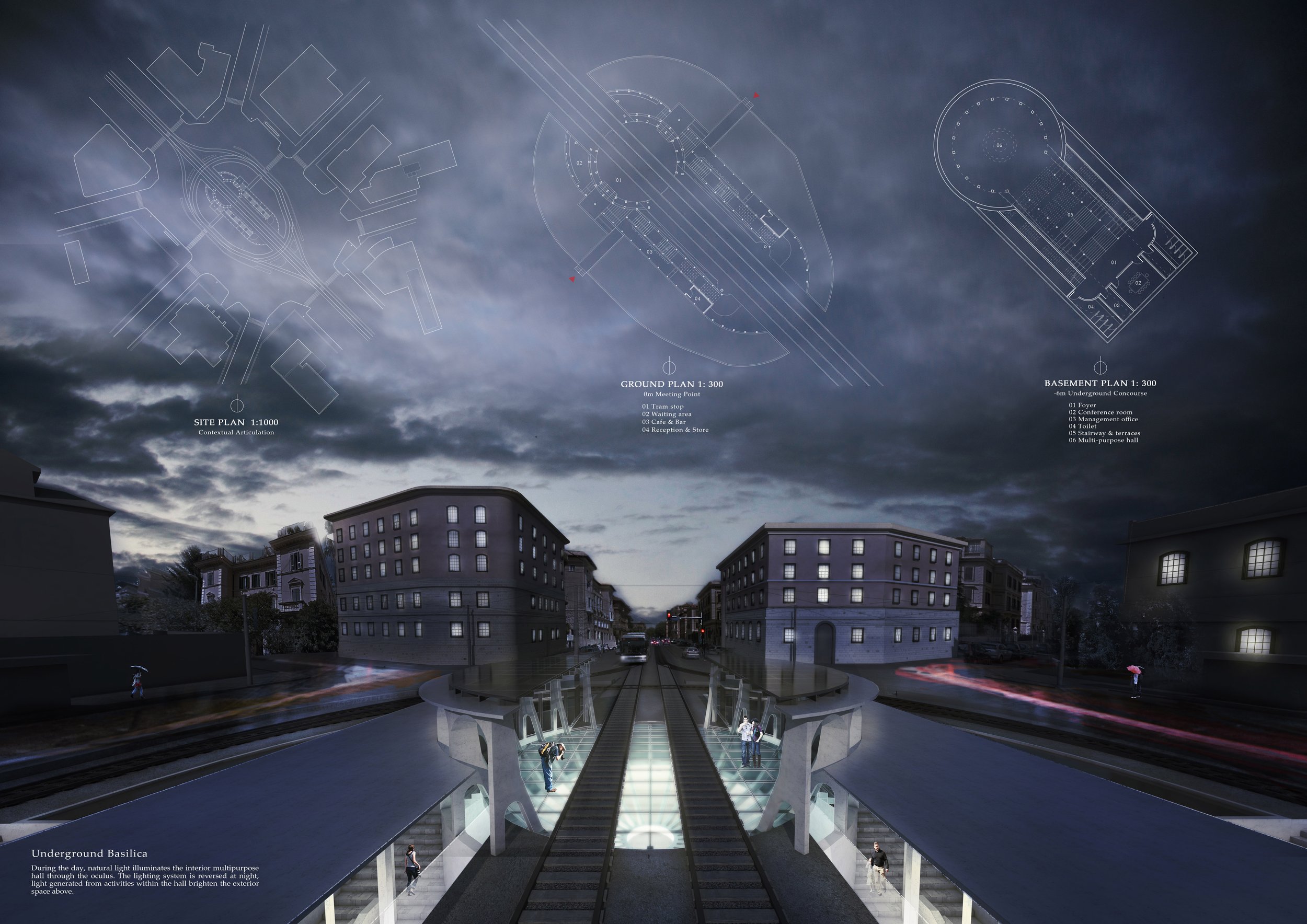
ANCIENT ROME REIMAGINED
ROME CONCRETE POETRY HALL
-
The Choice of Language
“Poetry is as precise a thing as Geometry” -Gustave Flaubert, French writer
Concrete has been an integral material in construction since the time of the Roman Empire. Today, it is the most widely used man-made material. And yet, can we truly recognize concrete’s enduring significance without grasping the historical moments in Roman Architecture? Which is to say, can we understand an artist without gaining a feel for its art? A philosopher without some glimpse into what he believed?
In the 21st century, software-generated algorithms and geometry often make the shaping and structuring of concrete as deliberately iconic or controversial to avoid looking dull and lifeless. Yet, The poetic nature of concrete architecture is not just about shape-making. To us, there was, and is, something in the structure, rhythm, and aesthetic of the Rome architecture language that gives many of its building a poetic nature.
In the context of our “poem”, the languages utilised are the concrete columns, arcs, and domes. We seek to use this indigenous language of Rome to give form and function to an urban configuration and architectural design that would fit into the old town of Rome and yet, upon closer inspection, appears contemporary.
In another word, to this age-old language of soaring repetitive columns, spanning arcs and domes, we mix in another; the poetic nature of modern concrete.
-
TYPOLOGY: Infrastructure, Culture
PROGRAM: Tram Stop, Cafe, Exhibition Hall
LOCATION: Rome, Italy
YEAR: 2017
STATUS: Concept
-
HONORABLE MENTION
BEE Breeder competition 2017- Rome Concrete Poetry Hall
Rhythm of Column
The concrete column was an important architecture breakthrough which allowed for the support of ceilings without the use of solid walls, thereby increasing the space which could be spanned by a ceiling, allowing the entrance of light and offering an alternative aesthetic to building exteriors. Eventually, columns became so much a part of the aesthetic look of a building that the columns themselves began to become independent artistic elements.
Our design aims to celebrate the structural and aesthetical breakthrough brought by the invention of concrete column, using it to regulate the internal and external experience; we push the limit of the columns’ height and thickness, hinting to the public of the unlimited structural potential of concrete in the future.
Within the Poetry Hall, the orderly repetition of optical similarities - the columns, establish a kind of rhythm of intuition, which then structures all the subsequent interior and exterior user experience. Human beings seek patterns and will naturally see them in spaces; the regular and predictable repetition of the columns will fabricate a soothing environment for the public. Each space within highlight this absolute rhythmic order, for example solid, void, solid, void, just as one would count one, two, one, two; a rhythm that is easily perceptible to both visitors and passersby.
Slight variations to the column rhythm and orientation - as seen at the tram stops and near curving spaces, help break the monotony and offers occasional surprises to the visitors during their exploration. The rhythm of the columns activates the interior space, leading visitors from the tram stops; to the café; down the steps to the conference rooms; and around the multipurpose exhibition hall.












